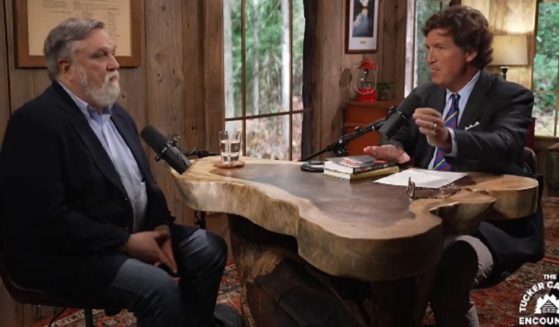Liz Weston: It's time to fix Social Security's tax burden
People on Social Security need a tax break. The rest of us need to make sure they get it — for everyone’s sake.
When Congress made Social Security benefits taxable in 1983, lawmakers didn’t index the tax thresholds to inflation. They “forgot” inflation again when adding a second layer of taxation in 1993.
That means the proportion of recipients who have to pay federal income taxes on their benefits keeps increasing. Initially, only 1 in 10 Social Security recipients had to pay any federal tax. Now, it’s over half.
Not indexing to inflation is a sneaky way of boosting taxes . Lawmakers can count on growing federal revenue without the politically uncomfortable act of repeatedly voting for those increases.
The taxes are based on combined income, which is a taxpayer’s adjusted gross income, plus any tax-exempt interest (such as interest on mutual bonds) and half of her Social Security benefit. Based on that:
– Single people with combined income over $25,000 a year, or couples with over $32,000 a year, face taxes on up to 50 percent of Social Security benefits.
– Single retirees earning over $34,000 and couples earning over $44,000 may pay taxes on up to 85 percent of benefits.
Because of the way Social Security benefits are taxed, many middle-income retirees face a “tax torpedo,” where their marginal tax rate can more than double. (If you’ll have retirement savings of roughly $200,000 or more, consider talking to a tax professional or financial planner about how and when to claim Social Security benefits to minimize the tax effects.)
In many cases, we’re punishing people who saved for retirement. That isn’t fair, and it isn’t smart.
So we should demand Congress index Social Security taxation to inflation, right? Based on the 1983 threshold numbers, that would ensure that only singles making over about $64,000 year, and couples making over $82,000 a year, would have to pay taxes on their Social Security income.
If only it were that simple.
The money collected from these taxes goes to two specific places: the Social Security and Medicare trust funds. Perhaps you’re starting to see the problem.
Both trust funds are running short of cash and could be depleted in a few years. That doesn’t mean they’ll be bankrupt. It does mean they won’t be able to pay 100 percent of promised benefits.
Social Security’s retirement trust fund is expected to run dry in 2034, after which it would be able to pay only 75 percent of the benefits that have been promised. Yanking away what amounts to 4 percent of its revenue, which is what’s generated by taxing up to 50 percent of benefits, would just hasten that day.
Medicare’s hospital insurance trust fund is in worse shape. The fund, which pays for inpatient hospital visits, skilled nursing, home health care and hospice, is forecast to be depleted in 2026, just a few years from now. The money raised from taxing Social Security benefits makes up 8 percent of the revenue going into the fund.
So fixing the stealth tax will require fixing Social Security and Medicare as well.
Proposals to privatize or scrap these systems face strong political opposition. Plus, the proponents can’t guarantee that future generations would be better off. Shoring up the current systems, by contrast, would ensure that today’s workers get the benefits they’ve been promised.
That almost certainly means those of us who are still working will pay in one way or another. We could fix the problem virtually overnight by raising the Social Security tax rate by 1.415 percent to 7.615 percent and increasing the Medicare tax rate by 0.32 percent to 1.77 percent . (Employers would pay an equal amount, since payroll taxes are split between workers and employers.)
More likely, tax increases would be phased in over time and combined with other changes, such as raising the full retirement age and lifting or eliminating the current cap on how much of our earnings are taxed. (The current 6.2 percent Social Security tax applies only to the first $128,700 of annual earnings in 2018, while the 1.45 percent Medicare tax applies to all earnings.) You can experiment with possible solutions using the American Academy of Actuaries’ Social Security Game .
Few of us are excited about paying more taxes, but shoving the burden onto retired people who’ve already paid their dues simply isn’t right. Making the system more fair could benefit all of us, now and in the future.
_______________________________________
This column was provided to The Associated Press by the personal finance website NerdWallet . Liz Weston is a columnist at NerdWallet, a certified financial planner and the author of “Your Credit Score.” Email: lweston@nerdwallet.com . Twitter: @lizweston.
Related links:
Taxes: NerdWallet https://nerd.me/2Cj0KL2
The Social Security game http://socialsecuritygame.actuary.org/
The Western Journal has not reviewed this Associated Press story prior to publication. Therefore, it may contain editorial bias or may in some other way not meet our normal editorial standards. It is provided to our readers as a service from The Western Journal.
Truth and Accuracy
We are committed to truth and accuracy in all of our journalism. Read our editorial standards.












